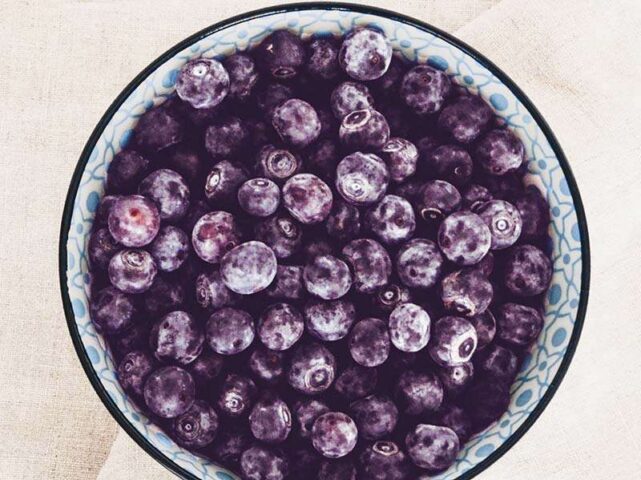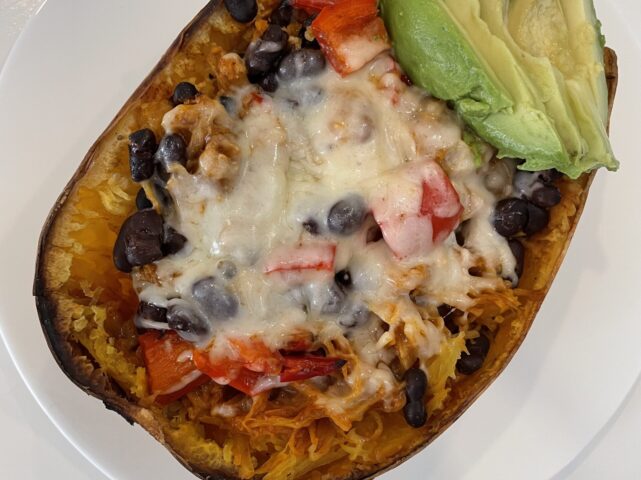Photo Credit: Kiwifraiz via Flickr
By Christie Caggiani, RDN, LDN, CEDRD
Valentine’s Day and American Heart Month
As we enter February, we’re seeing red around every corner. Valentine’s Day and American Heart Month highlight the color, and give us a burst as the sometimes-drab days of winter continue to swirl around us. Not only can our moods become a little blah this time of year, our food choices may become more monotonous as well. By creating a theme, however, we can add a fun, proactive twist to eating, and bring more variety to our plates. What a great way to jazz up your kids lunchboxes, snacks or meals at home by picking a color theme– and what better color this month than RED!
Benefits Of A Food Color Theme
Our role as parent or provider is not to make sure our kids love everything they eat, but rather to present them with opportunities to explore food, develop their preferences, expand their comfort level around a variety of choices, and therefore become confident, competent eaters. A color theme is one way that children can participate in the process, as they identify colors in the grocery store, find them in your fridge, and add them to their plate palate. It also provides an opportunity for them to learn about the function of many foods. For example, as you will notice below, many red fruits and veggies help promote heart health, so children can begin to connect the ways that foods work for them and support their bodies and brains. If you are introducing a new food, make it fun and don’t be discouraged if they don’t enjoy it the first time around (or the first many times!). So roll out the red carpet and enjoy acquainting your family with some of these bright beauties:
Acai:
This berry from Central and South America is shown to have excellent antioxidant value, which may assist in heart health, decreased inflammation, and decreased risk of some cancers. Mix frozen acai in your blender with a splash of milk and banana, then top with granola, fresh fruit, and shredded coconut for a colorful and satiating breakfast or snack.
Cherries:
These succulent rubies give us great fiber, immune-helping vitamin C, and heart-happy potassium. Slice up fresh or frozen cherries for a fun ice cream topping or substitute berries in your favorite recipe with equal parts (pitted) cherries.
Cranberries:
Not only are they super for our urinary tract system, but they may also help keep our digestive system protected from unhealthy bacteria and ulcers. Pour a glass of cranberry juice, add some canned cranberries into a smoothie, or mix some dried cranberries into your kids’ trail mix.
Raspberries:
Rich in vitamins C and K, and many antioxidants such as alpha and beta-carotene, lutein, zeaxanthin, and choline, these berries can help protect our hearts and prevent certain types of cancers. Fold some fresh berries into your favorite muffin or pancake mix, or keep frozen raspberries on hand to toss into a smoothie or oatmeal.
Strawberries:
They are a good source of heart-helping folate, which decreases the risk of certain birth defects, and are a powerhouse of the antioxidant vitamin C, giving a boost to our immune system. Sprinkle some strawberries on cereal or blend up some frozen strawberries in a milk and yogurt smoothie. Or dip into some melted chocolate for a super satisfying snack!
Watermelon:
Despite popular belief that watermelon is made up of only water and sugar, it is actually considered a nutrient-dense food, one that provides a high amount of vitamins, particularly A and C, minerals such as magnesium, potassium, and zinc, and antioxidants, including high levels of lycopene. Because it does contain 92% water, it’s also a wonderful way to help keep your kids hydrated. Insert a popsicle stick into watermelon chunks for a fun snack, or freeze some watermelon balls to add to your kids’ water bottles.
Beets:
With an earthy flavor that gets super sweet when cooked, beets are very nutrient-loaded, giving us 19 percent of the daily value for folate, necessary for the growth of healthy new cells. Their rich color comes from the phytochemical betanin, which helps bolster immunity. Roast them, pickle them, or shred them raw and dress them with citrus for a refreshing salad.
Red peppers:
For the love of your eyes and your skin, include these vitamin A-packed foods. Add a little crunch to your child’s favorite deli sandwich or have them taste test with peanut butter or hummus.
Tomatoes:
These red beauties are heart-protective and provide a great defense against prostate and potentially breast cancers. Include a little more marinara sauce on your pasta or add some grape tomatoes into the lunchbox.








